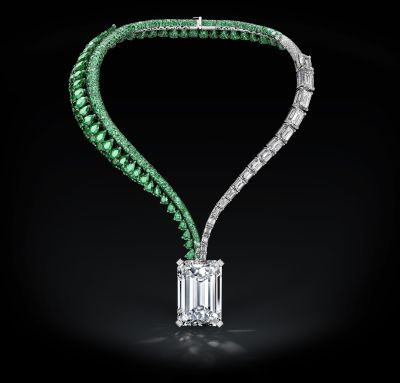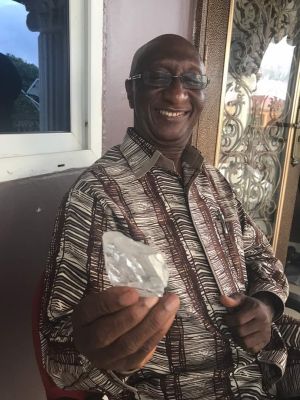Improvements in diamond growth technology and methods have led to a
noticeable increase in colorless synthetic gem diamonds in recent years.
Concerns in the diamond industry focus on laboratory-grown diamonds not
being properly disclosed or even being sold as natural stones. Through
careful examination and analysis, gemological laboratories can separate
natural from synthetic diamonds. Occasionally, however, fraud is
involved in attempting to conceal a gem’s identity. The Carlsbad
laboratory witnessed such an attempt.
On this occasion, a round brilliant cut (figure 1, left) was
submitted for an updated diamond grading report. Its girdle was
inscribed with an actual GIA report number issued in 2015 (figure 1,
right). The older report was for a natural, untreated diamond and
contained the following grading information: 1.74 ct, round brilliant
cut, D color, Excellent cut grade, and VVS
1 clarity. Upon
grading, the new submission was described as a 1.76 ct round brilliant
cut with F color, Excellent cut grade, and VS
1 clarity.
Moreover, our screening processes determined that the newly submitted
sample needed additional testing to determine its origin. This
examination revealed it to be an HPHT-grown synthetic diamond. Synthetic
cuboctahedral growth structure and phosphorescence were clearly visible
in DiamondView imaging (figure 2).

Figure 2. DiamondView imaging showed the synthetic
growth structure and blue phosphorescence typical of HPHT-grown
synthetic diamonds.
Aside from the observed discrepancies in weight (1.74 vs. 1.76 ct), color (D vs. F), and clarity (VVS
1 vs. VS
1),
FTIR spectra clearly showed that these were not the same diamond. The
natural diamond from the original report was type Ia with aggregated
nitrogen impurities, while the new one was type IIb with boron
impurities (figure 3). Careful examination of the report number
inscribed on the synthetic diamond revealed a font different from the
one used by GIA, proving that it was not an authentic inscription.

Figure 3. FTIR absorption spectra revealed that the
synthetic diamond was type IIb, whereas the fraudulently inscribed
report number referred to a natural type Ia diamond. The spectra are
offset for clarity.
While most synthetic diamonds that come to the laboratory are
properly disclosed, some are submitted out of concern that a stone
presented as natural might be synthetic. Rarely do we encounter the type
of blatant fraud described here. It is important for the industry and
public to exercise caution, because these types of misleading practices
do occur. We believe the submitting client noticed inconsistencies with
the GIA report information and sent it to the lab for an updated report.
If any doubt exists or some aspect of a diamond (such as an
inscription) seems odd, the stone should be sent to a gemological
laboratory for verification.
Source:
GIA Education





